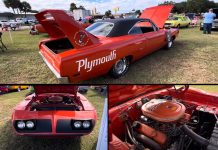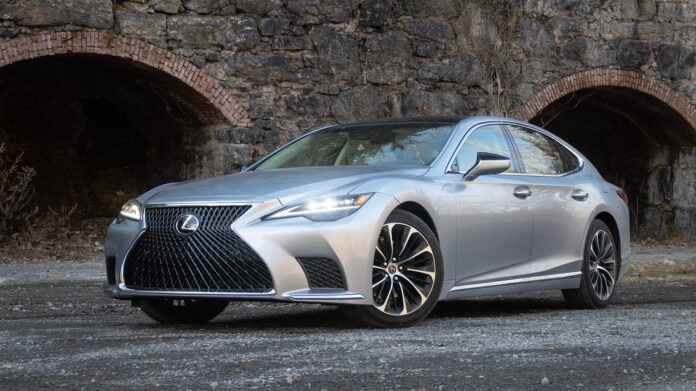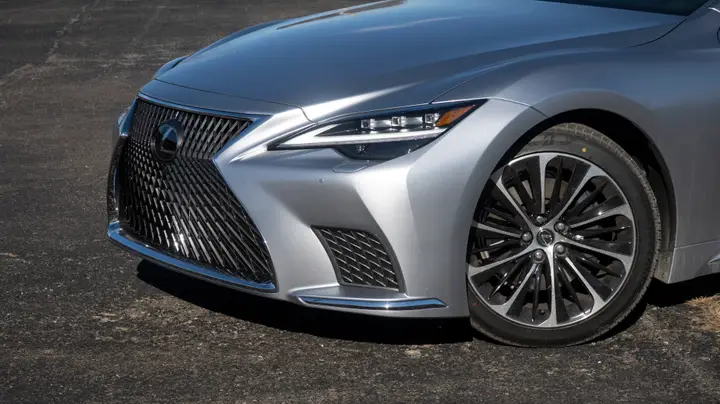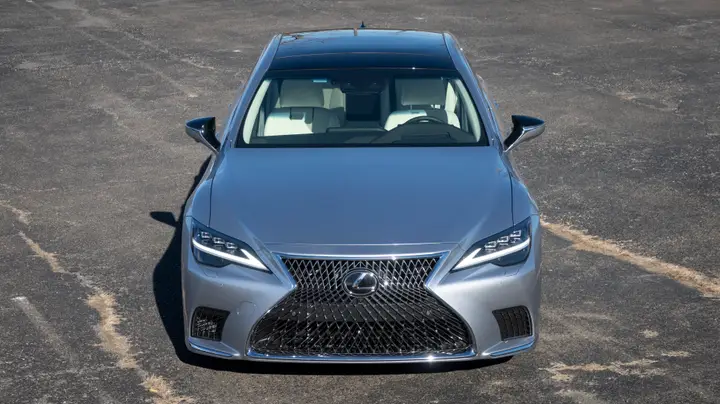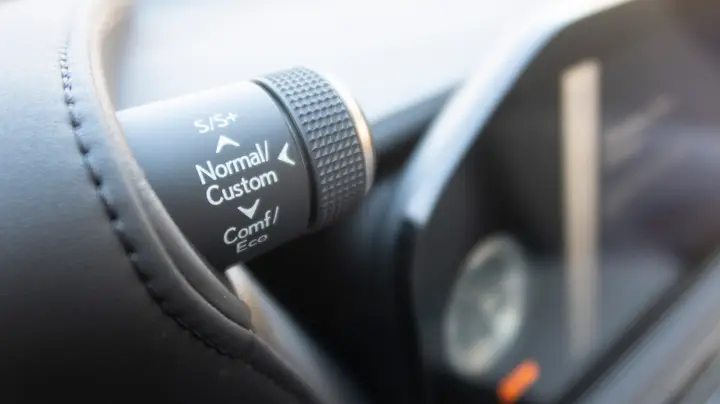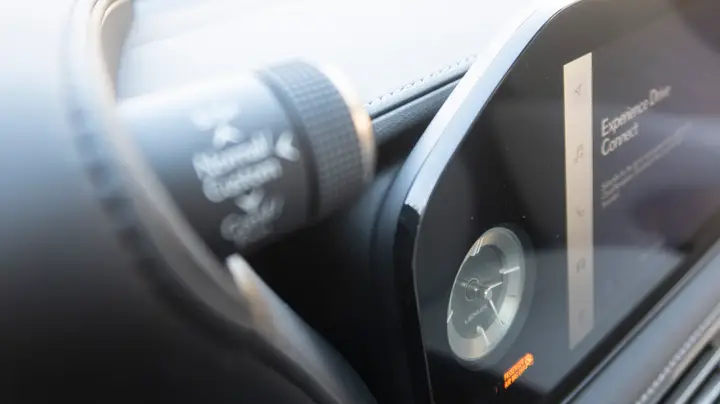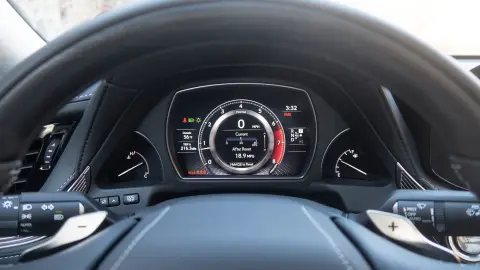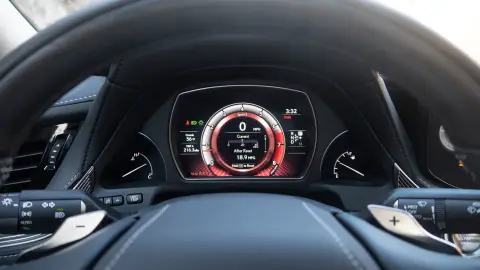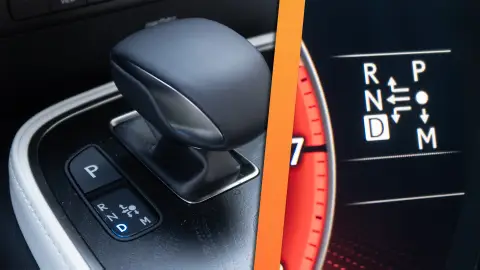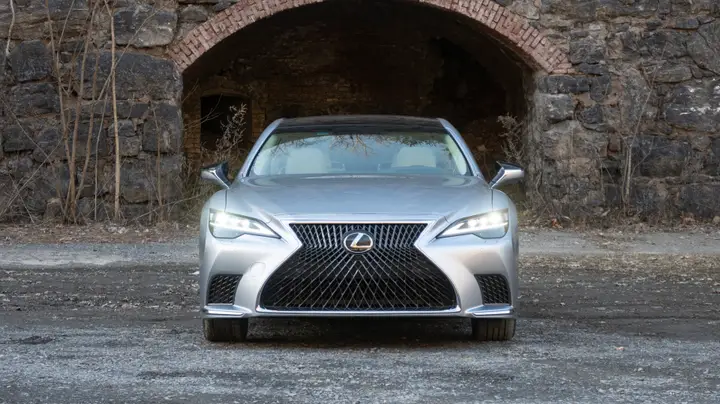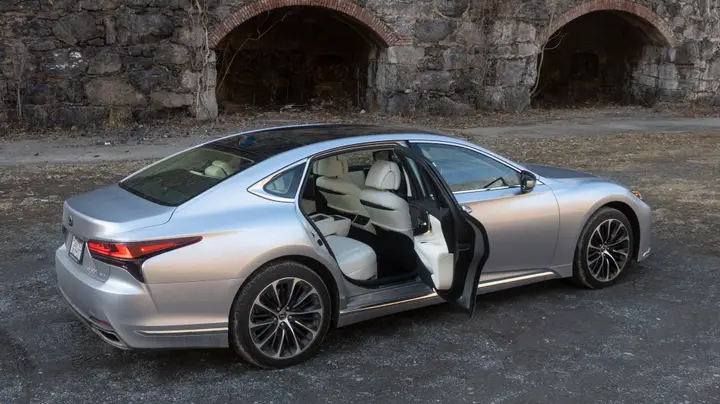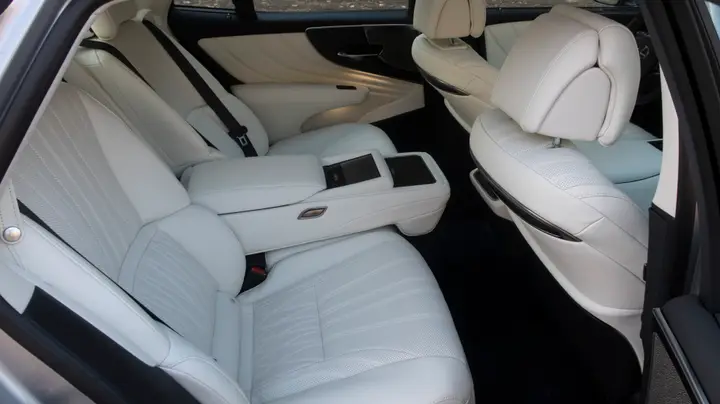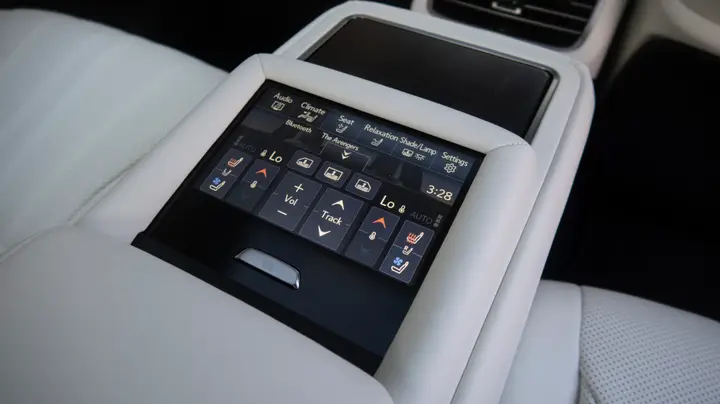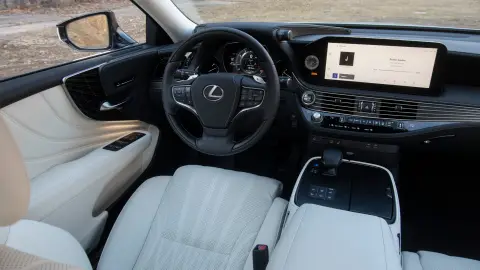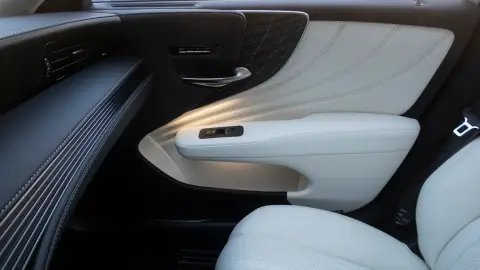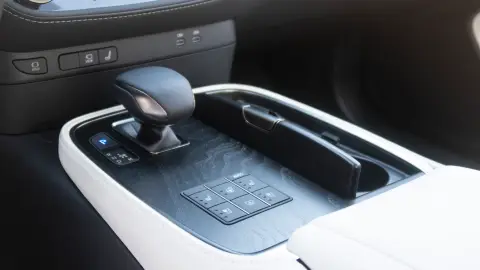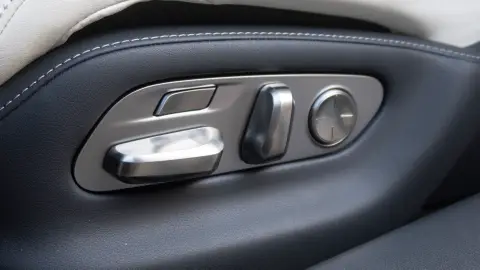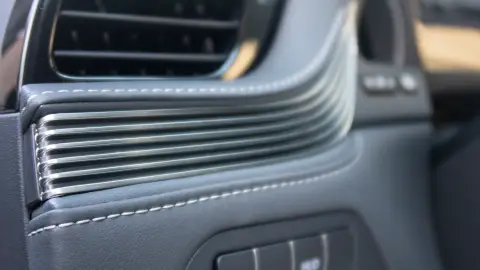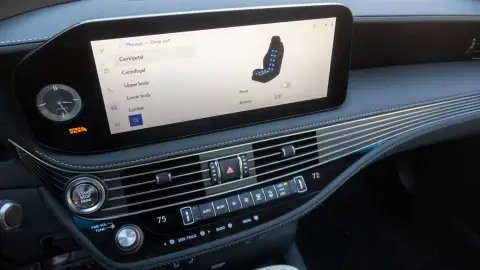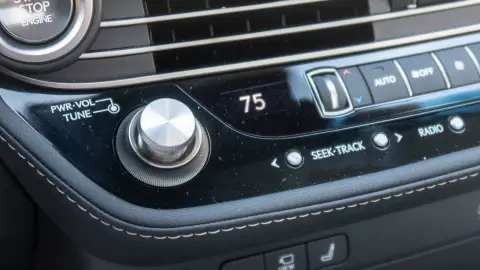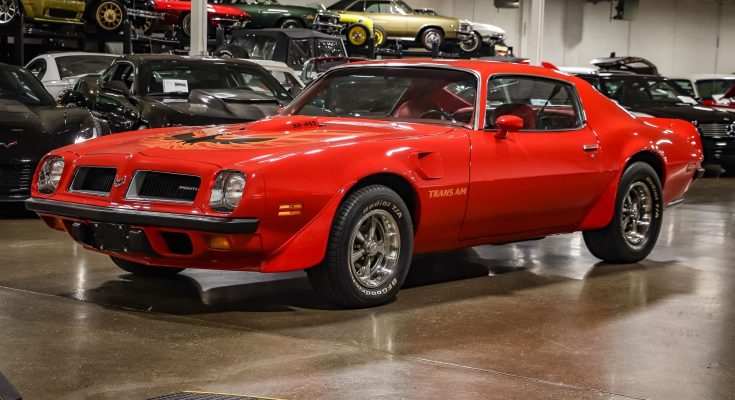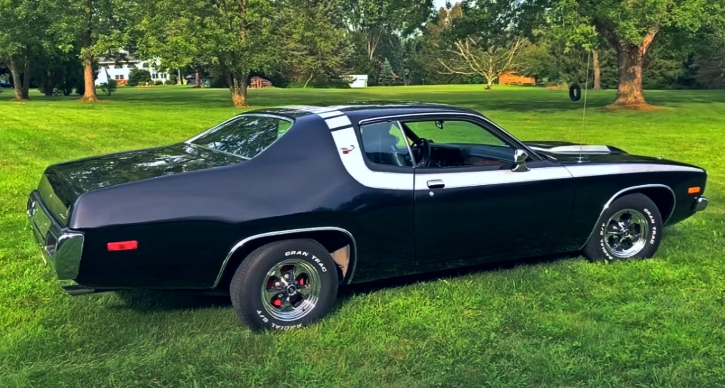Sitting behind the 2023 Lexus LS 500’s spread of controls took me back to childhood. Specifically Christmas 1998—when I delightedly pulled the wrapping off a stereo the size of an engine block. Remember those? So many buttons, so many lights! I felt such power and coolness. What a great sensation to stoke.
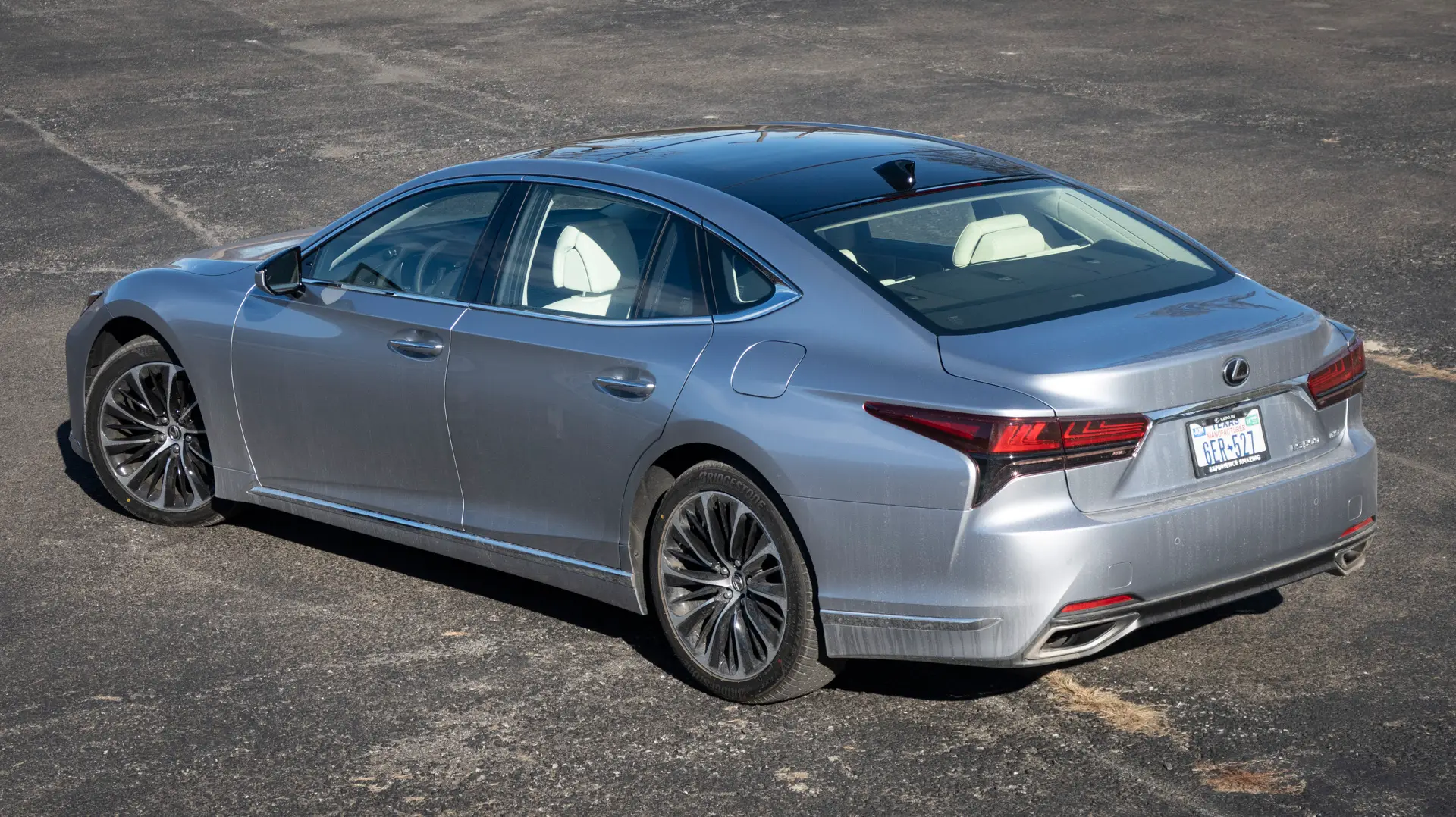
I’ve driven plenty of impressive, high-end cars and while I’m certainly not about to tell you the LS sedan is superior to all of them, there’s a uniquely compelling vibe to the human-machine interface here. The cockpit looks high-tech without being chintzy or gimmicky. It’s modern, but I’m confident it’ll age quite gracefully.
Graceful is not a word I’d use to describe the way the LS 500 carries itself on an aggressive attack of mountain roads, but it’s got more than enough juice to get out of its own way—double the speed limit in the time it takes you to pull a sip of coffee. You’ve got yourself a fine executive express here.
2023 Lexus LS 500 Specs
- Base price (Executive Package as tested): $80,785 ($110,535)
- Powertrain: 3.4-liter twin-turbo V6 | 10-speed automatic | all-wheel drive
- Horsepower: 416 @ 6,000 rpm
- Torque: 442 lb-ft @ 1,600 rpm
- Seating capacity: 5
- Curb weight: 5,129 pounds
- Cargo volume: 17 cubic feet
- Top speed: 140 mph
- EPA fuel economy: 17 mpg city | 27 highway | 21 combined
- Quick take: Supremely classy and comfortable with a thoughtful interior that will look good for years to come; but looks huge and handles accordingly.
- Score: 8/10
The Basics
The Lexus LC grand touring coupe is flashier than this, and the LX SUV is heavier. But the LS 500, an immense old-school sedan, still feels like a brand flagship. And it really is enormous—at over 17 feet long tip to tail, I kept thinking a celebrity’s spaceship had gotten lost and landed in my driveway when I caught glimpses of it out my window.
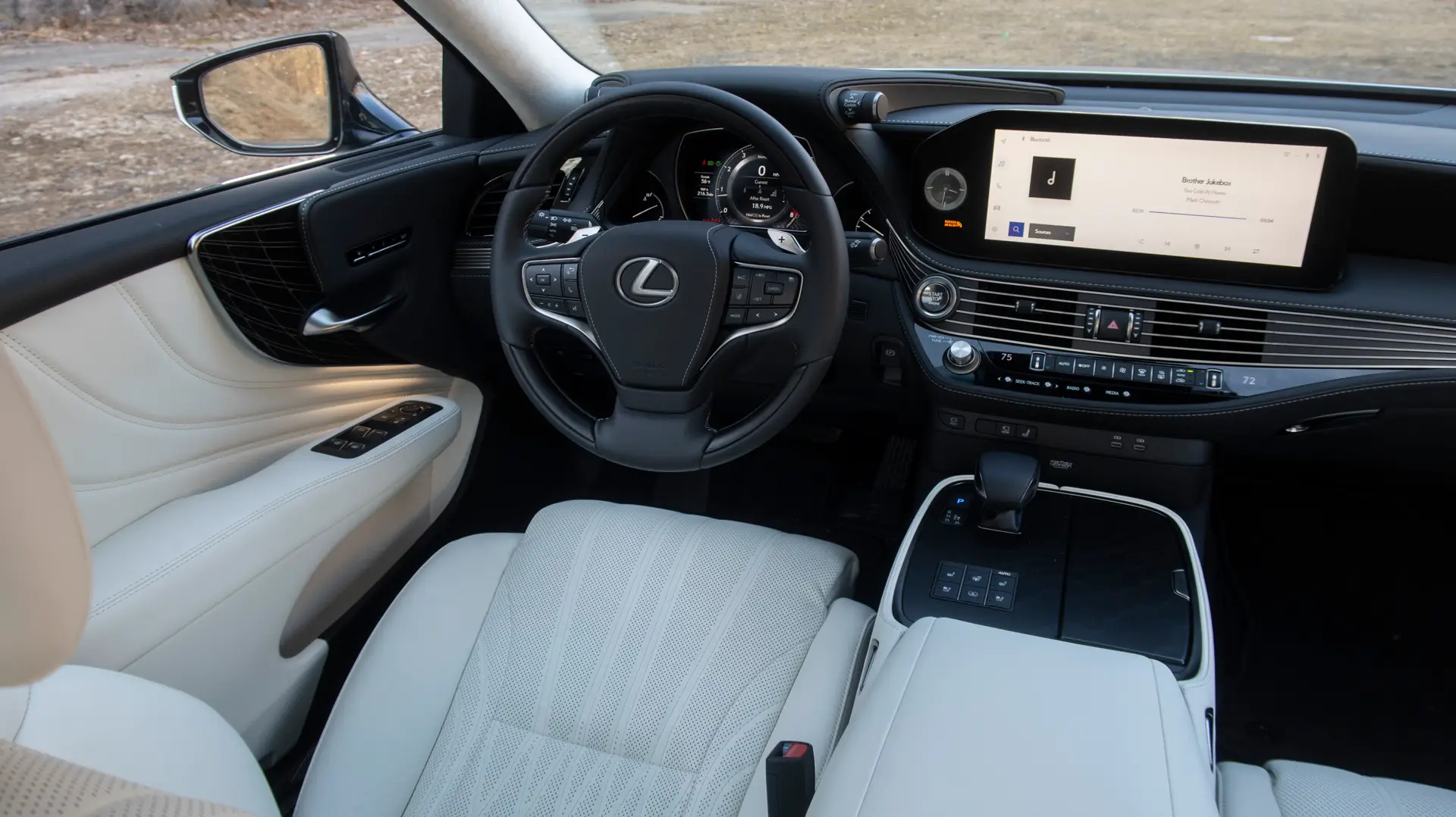
Today’s LS design has been around for a few years, and of course, the nameplate has been a staple of the Lexus lineup since it dropped in 1990. The original car is still considered a high watermark of Japanese luxury, and while I don’t think the current model will be as big of a bullet point in the annals of automotive history, it is a damn fine high-class conveyance.
In the back, a small screen for controlling climate caught my eye as I lowered myself into the back seat. That interface doesn’t seem entirely necessary but it’s elegantly executed and definitely illustrates the point that you’re riding in something fancy. With it, you can tweak temperature controls and fine-tune your seat’s orientation. If you’re in the right rear seat of an LS 500 with the right options package, you can even use a deployable ottoman-style stool to really drive home the vibe that you’re flying first class.
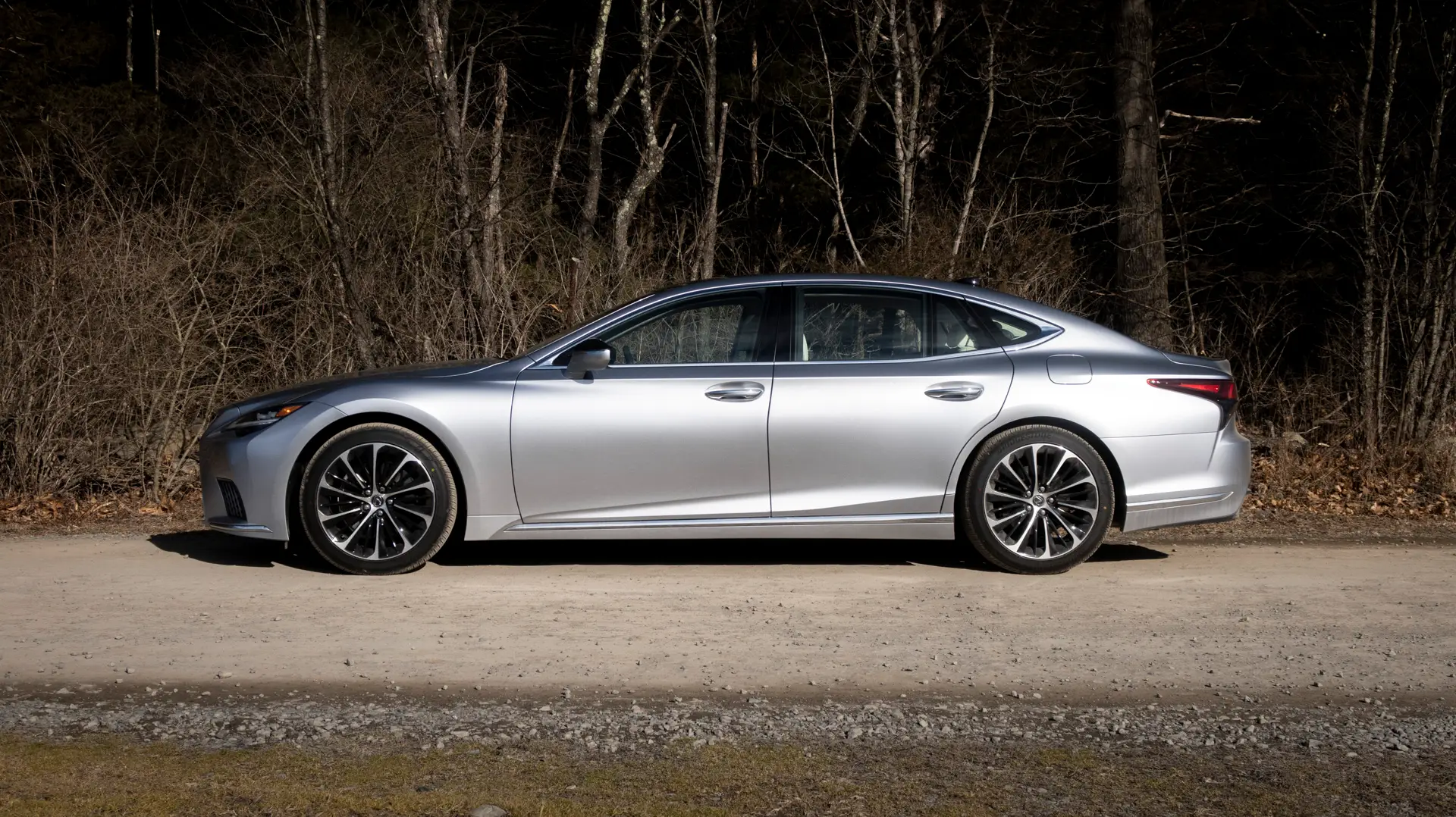
You won’t quite find the extravagance in presentation that you’d see in a Rolls-Royce, Bentley, or Maybach, but the room for relaxation is generous and the interior design is soothingly clean.
A 3.4-liter V6 might seem a little small for such a hefty (about 5,000 pounds) car. But with twin turbochargers boosting the output claim to 416 horsepower and 442 lb-ft of torque, I can’t say I ever found myself thinking “Shucks, I sure wish this could move faster in a straight line.” But it doesn’t exactly snap off shifts with the urgency you feel in a performance car, making the paddle-shift experience a little unsatisfying.
The engine remains fairly quiet, even under hard charging, and the sensation of speed is pretty well muted physically as well. It seems clear that the power is only part of the LS 500 package for practical purposes. You want to be able to make a pass and merge boldly in a high-end car like this, which you certainly can, but everyone inside the car is pretty well insulated from the work the engine, transmission, and suspension are doing to make the machine move.
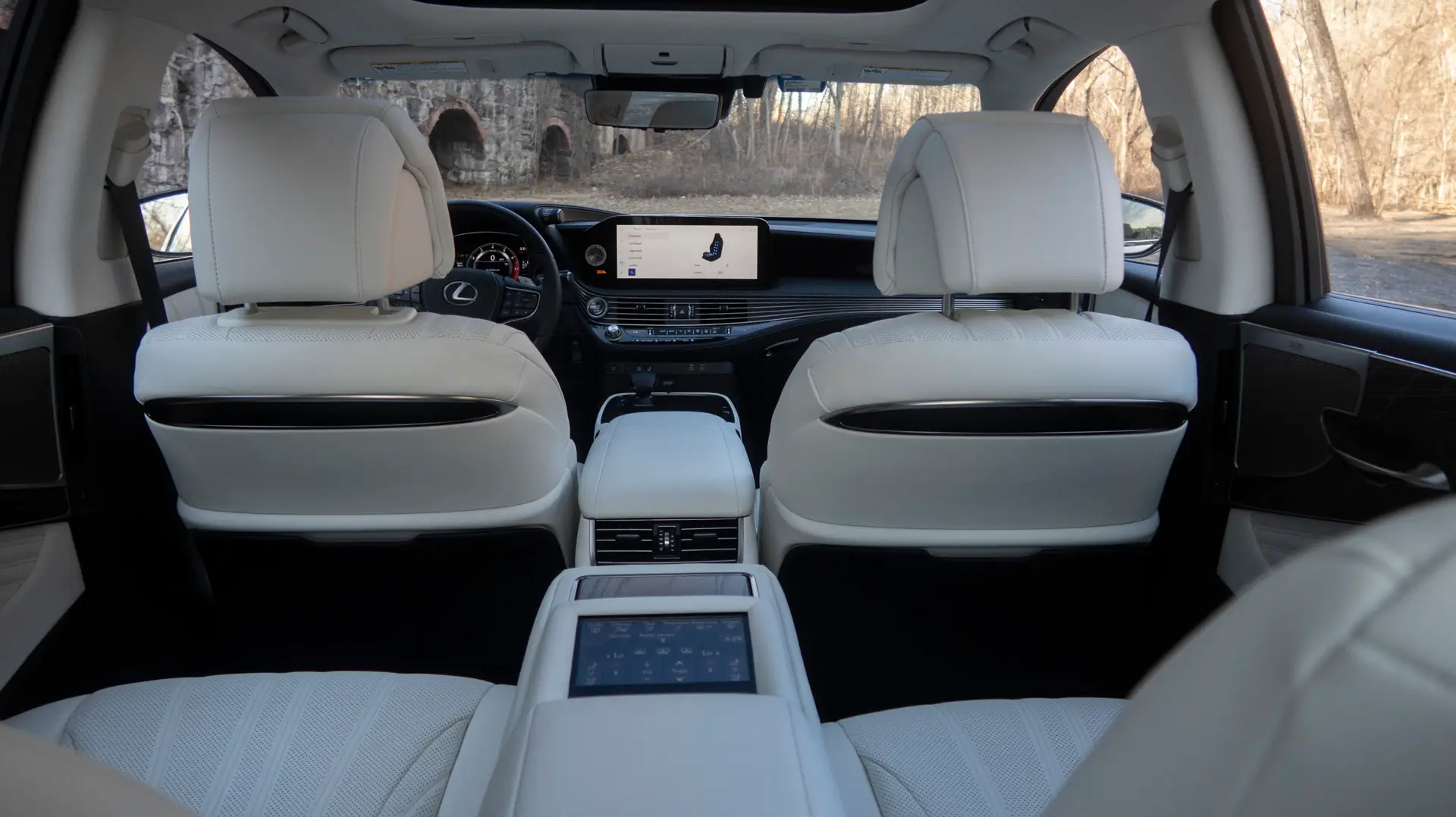
For when you’re not going straight, Adaptive Variable Suspension is designed to provide max comfort while retaining grip and the car can even change its ride height just a smidge at low speeds.
Driving the Lexus LS 500
Not to keep harping on the car’s size, but it does feel large going down the road. The end of the expansive hood seems far away, as do the rear seats. That’s not a bad thing—on the contrary, I found it felt kind of cool and gave driving the thing a sense of occasion.
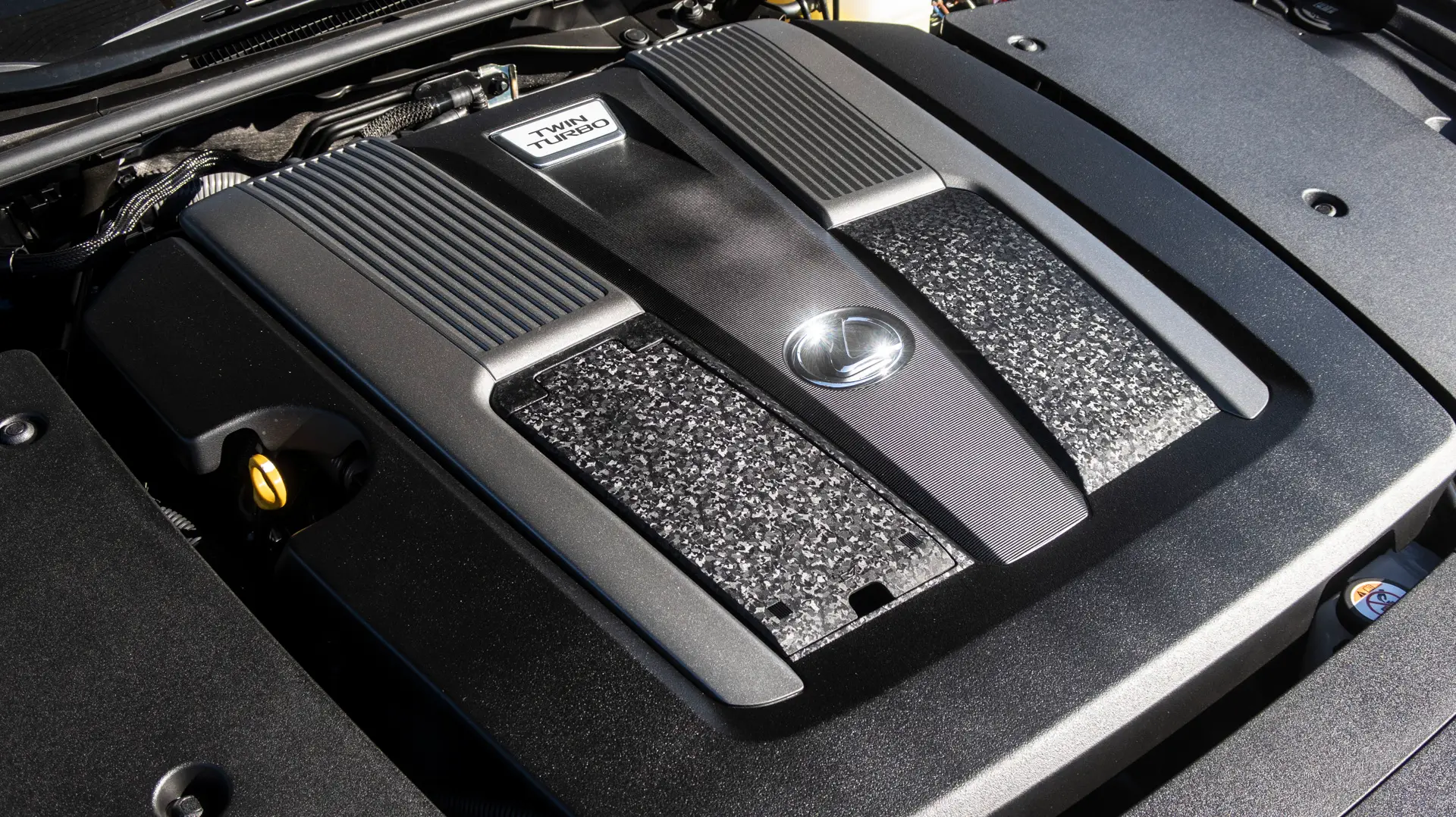
It made me want to drive the car deliberately, and, at a brisk or modest pace, the vehicle makes its way down a road in exceptional comfort and serenity.
When you turn very hard, regardless of drive mode, the thing really tilts. Angrily punishing the LS 500 up and down mountain roads almost had me feeling like I was in an ’80s movie chase scene, where the sedans all tip and dip dramatically. Except, grip was never lacking. The car’s competent enough in spirited driving, but rapidly changing direction just felt discordant with the vehicle’s vibe.
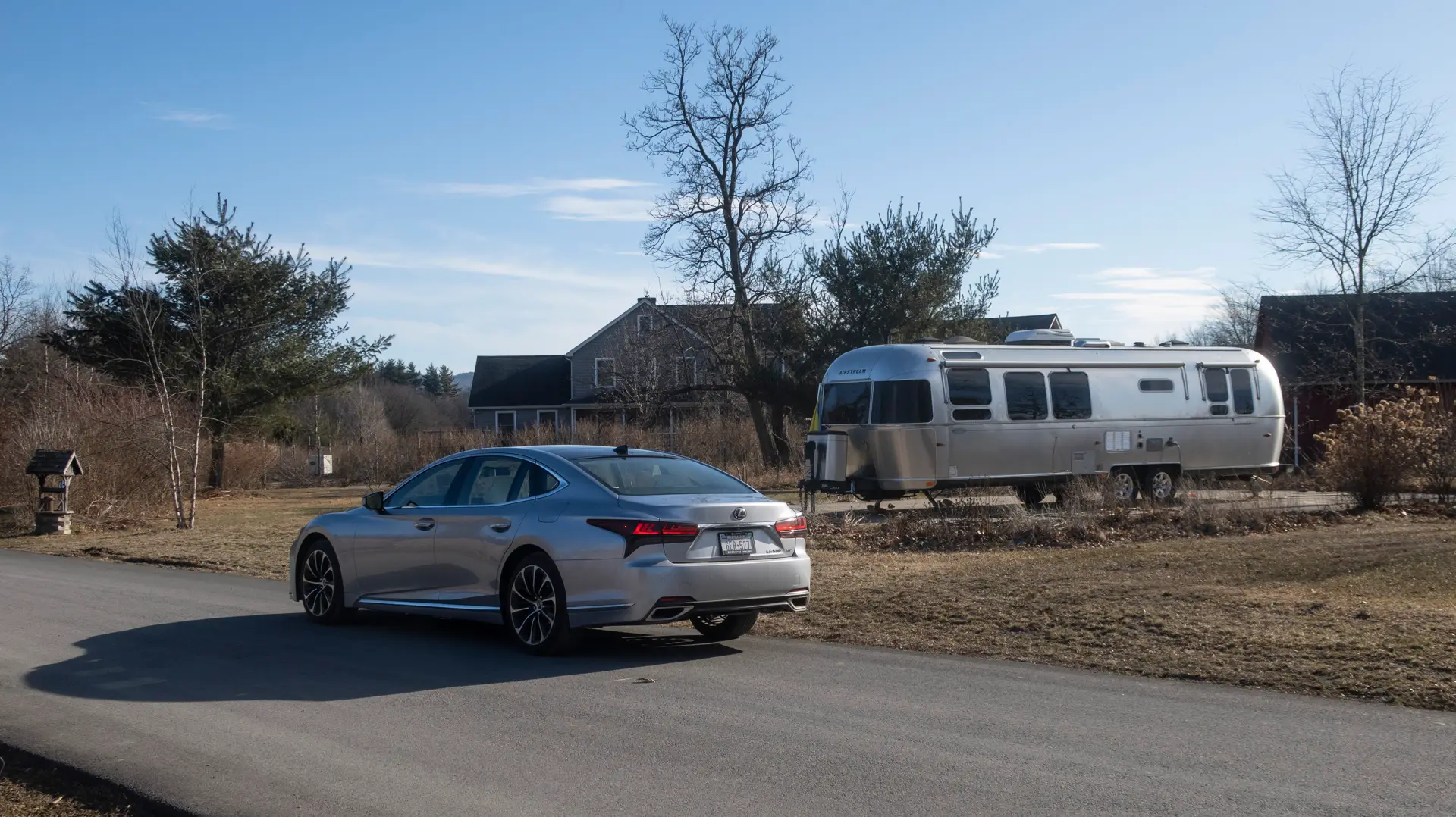
What I definitely did not feel were potholes. My test loops around New York’s Hudson Valley feature many roads that are about as mangy as the deer that like to patrol them, and this car pretty much floated over all of them.
The Highs and Lows
I totally underestimated how awesome the current Lexus user interface is—the buttons, displays, and general controls of this car are at once intuitive and cool-looking. I consider that extremely high praise for any car and honestly, a good enough reason on its own to want to drive one of these every day.
Not only does the LS have a good breadth of hard buttons for critical functions, but they’re drawn quite artfully into the design of the dashboard and cockpit. In the same vein, the fully digital gauge cluster display is clean and cohesive with the rest of the car.
While some modern luxury cars feel a little like cubicles, with a lot of empty surfaces and tacked-on screens, the LS interior really feels like that of a vehicle, a companion, a machine with some personality that you can connect with as a driver.
There’s a vaguely nautical vibe to the cabin—I think it’s the decorative stitching and light coloring on some of the interior soft pieces optioned on my loaner car—bringing to mind things I’ve seen on high-end oceangoing vehicles. I’d also been playing a lot of Bioshock right around the time I test drove this, and almost felt like some of the hard trim elements (namely a billet grille-esque horizontal piece spanning across the dash) had a whiff of that underwater-art-deco design style that permeates those games.
Back in reality—you’re probably not going to end up running down tires attacking backroads in Sport S+ mode all that often, but you’ll be sweeping your eyes and fingers around the interior on every drive. And when the cockpit looks this cool, it’s hard not to have a good time regardless of your pace.
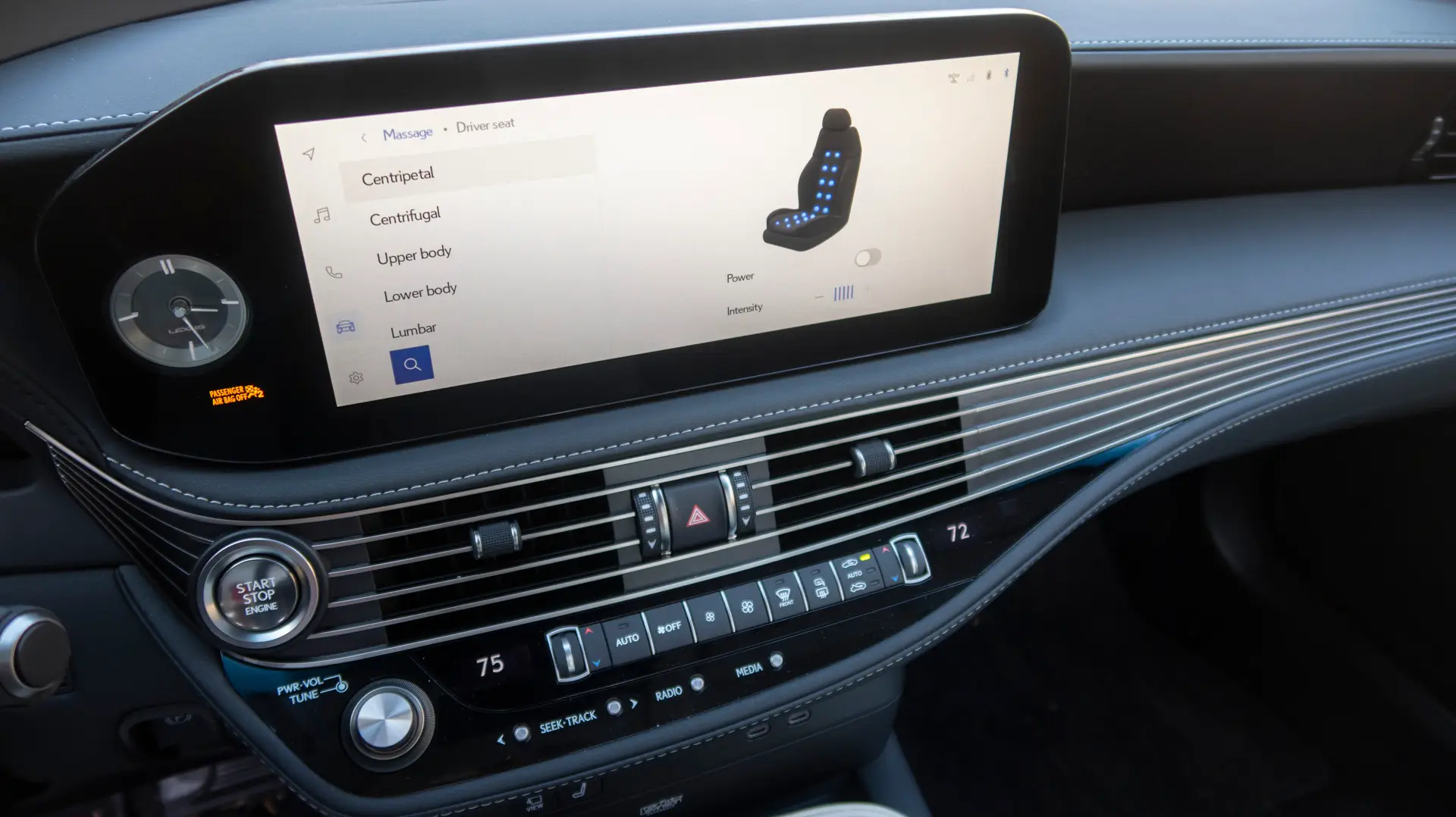
The LS 500’s main weaknesses, as I was able to deduce in a couple of hundred miles of testing, are really just the inherent limitations of a luxury sedan. It’s expensive, it’s thirsty, and it’s too nice for a muddy dog to ride in. I bet there are other reviewers who would also say it feels old, but I think it’d be more accurately described as aging gracefully.
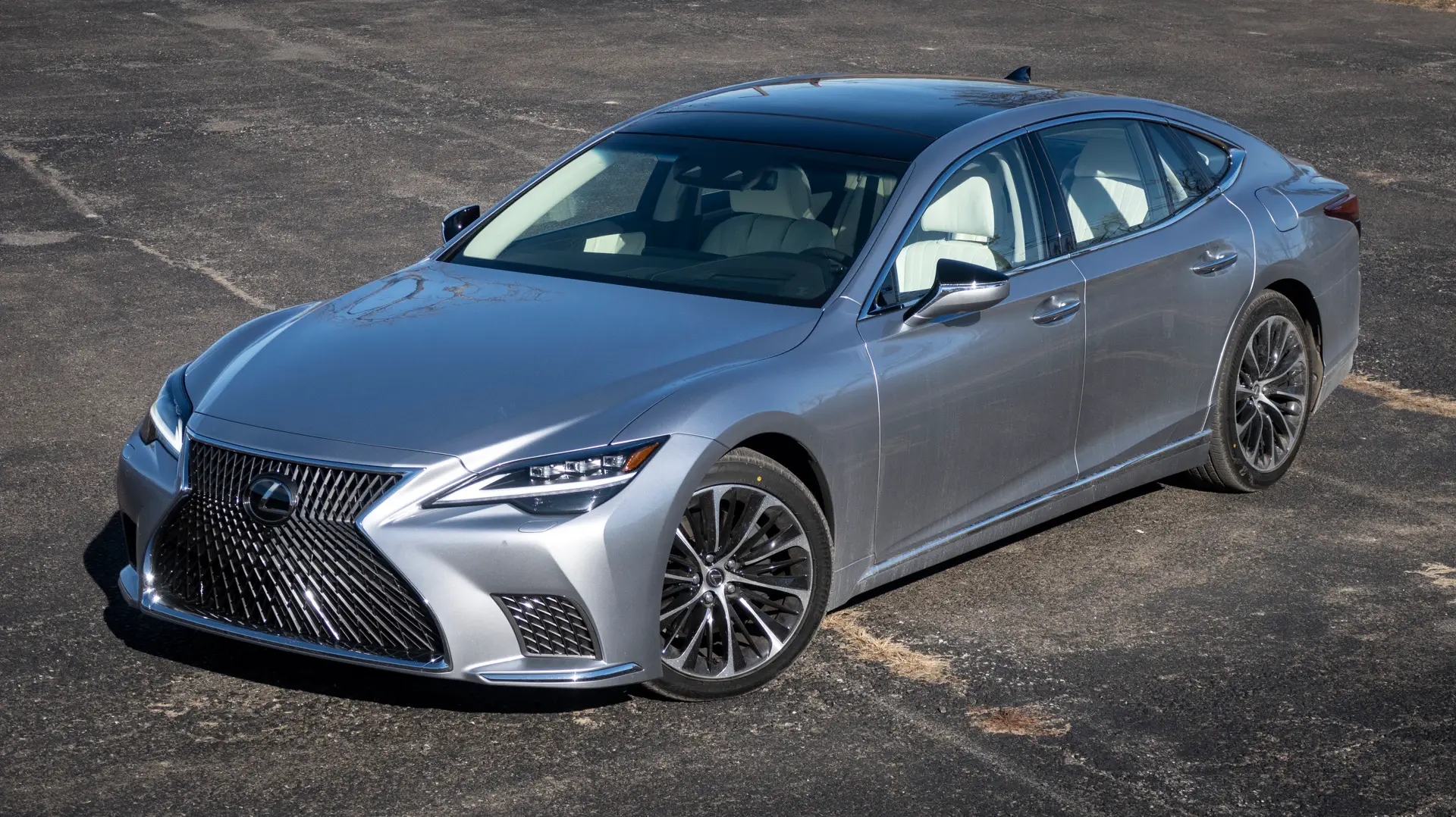
I’m not particularly electrified by Lexus’ current spindle grille or paper-creased bodywork, but I’m extremely confident that the 2023 LS 500’s cockpit will still look good (and be fun to use) in a decade.
Lexus LS 500 Features, Options, and Competition
The Lexus LS 500 has a lower base price than the Mercedes S-Class or BMW 7 Series at around $80,000. But once you start selecting all the cooler features like hand-pleated interior trim and 28-way adjustable massage seats, you’ll be ringing up at over $100,000.
The leanest you’d want to spec an LS would be with just the Interior Upgrade Package, which adds $3,530 to your list price but increases the fanciness of almost every interior surface.
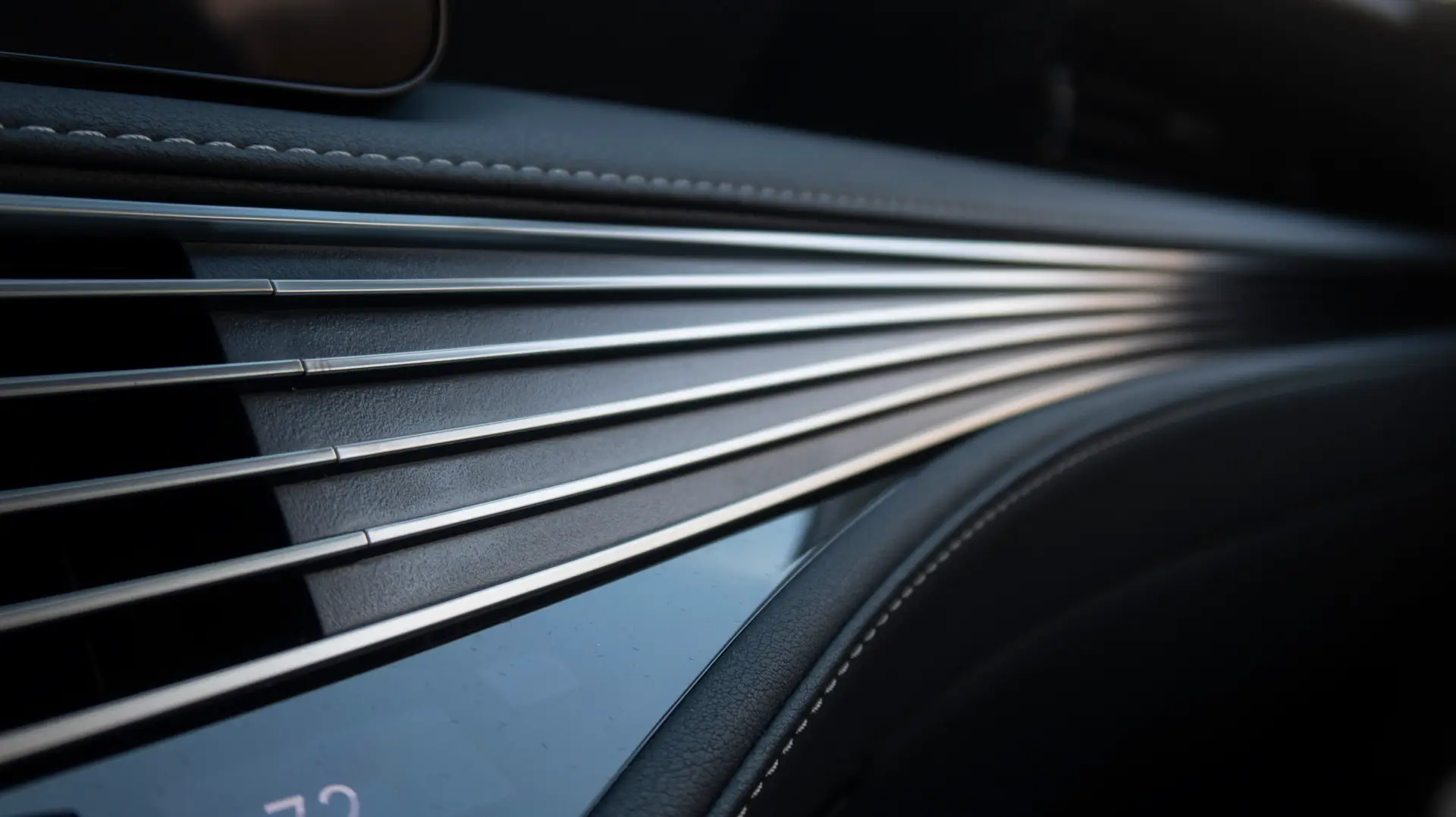
The Executive Package adds further niceties that particularly come in handy if the car’s being used for limo duty—that’s when you get into features like the right-rear “power recliner” seat with a sliding ottoman and Shiatsu massager. Of course, such luxury adds almost $17,000 to the price.
For the absolute max-boss spec LS, you can add a $23,000 package that features the inclusion of Kiriko glass. This is a Japanese art form of etched glass that Lexus seems very proud to be able to sell you. I have to admit I’m a sucker for that kind of thing—why not inject a little abstract artistry into a luxe car interior?
The Genesis G90 is probably this car’s closest real rival. That car is less money, and I think a strong case could be made that it’s better looking. Having driven only the smaller Genesis G70 I can’t speak to how the 90 stacks up exactly, but I can’t deny that the switchgear in the Lexus did feel considerably more robust than the last Genesis I was in a few weeks ago.
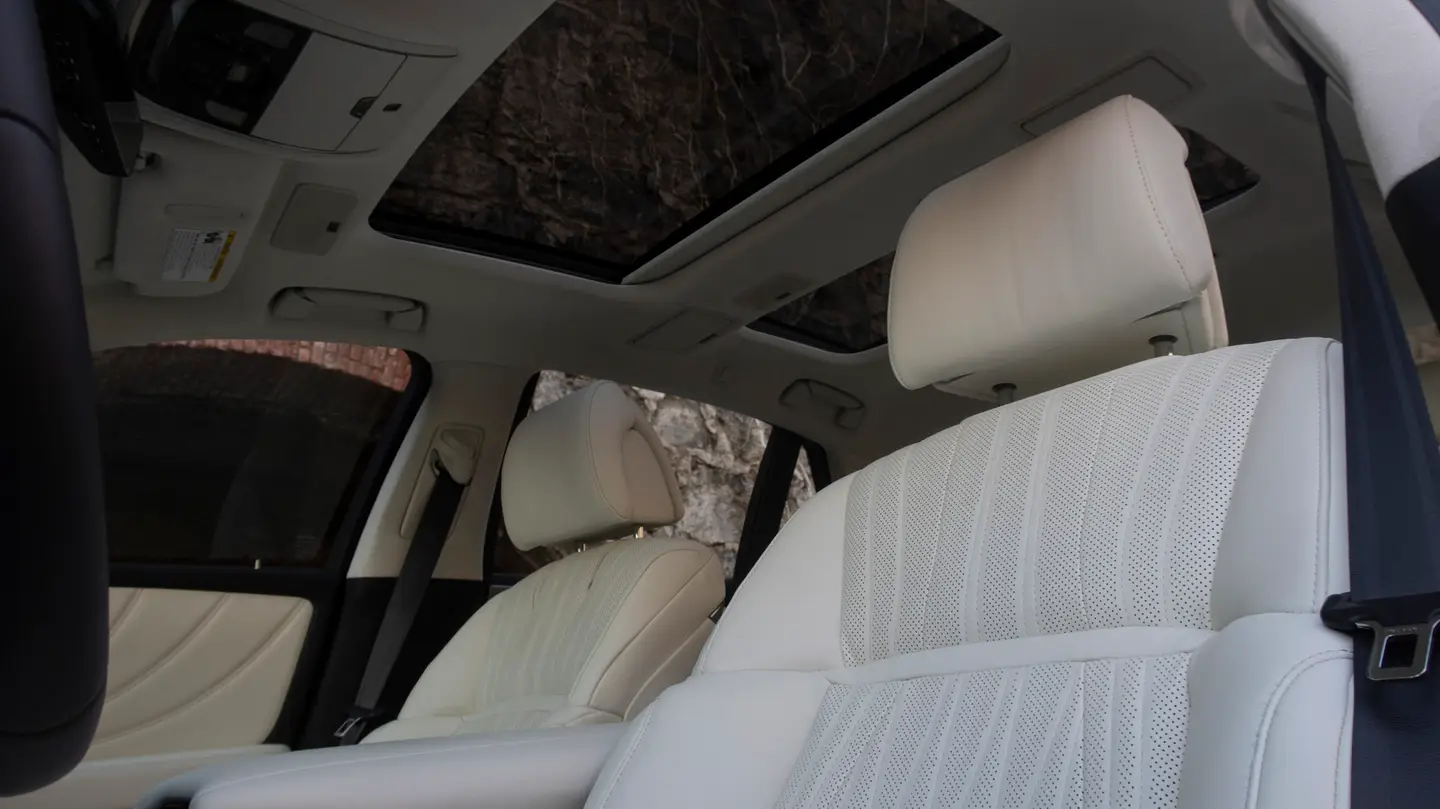
If I were spec’ing out an LS 500 for myself, I would be tempted to splurge on the fancy glass but that’s only available with a black interior. The seats and door panels looked so lovely in white leather on my loaner car that I’d have to recommend running a light-color interior.
I know I have a habit of outing myself as a luddite in every review, but, I’d skip the $3,200 Lexus Safety System+ … not that I advocate for un-safety, I just don’t like head-up displays and rarely use cruise control.
Sustainability
The electrified version of this car—the LS 500h—is an all-wheel drive hybrid with a 7 out of 10 smog score and an official EPA rating of 25 mpg in combined driving. This gas-only LS 500, with rear-wheel drive and a twin-turbo V6 gets a 5 out of 10 smog score and is expected to burn 567 gallons of gasoline per year versus the hybrid’s 500.
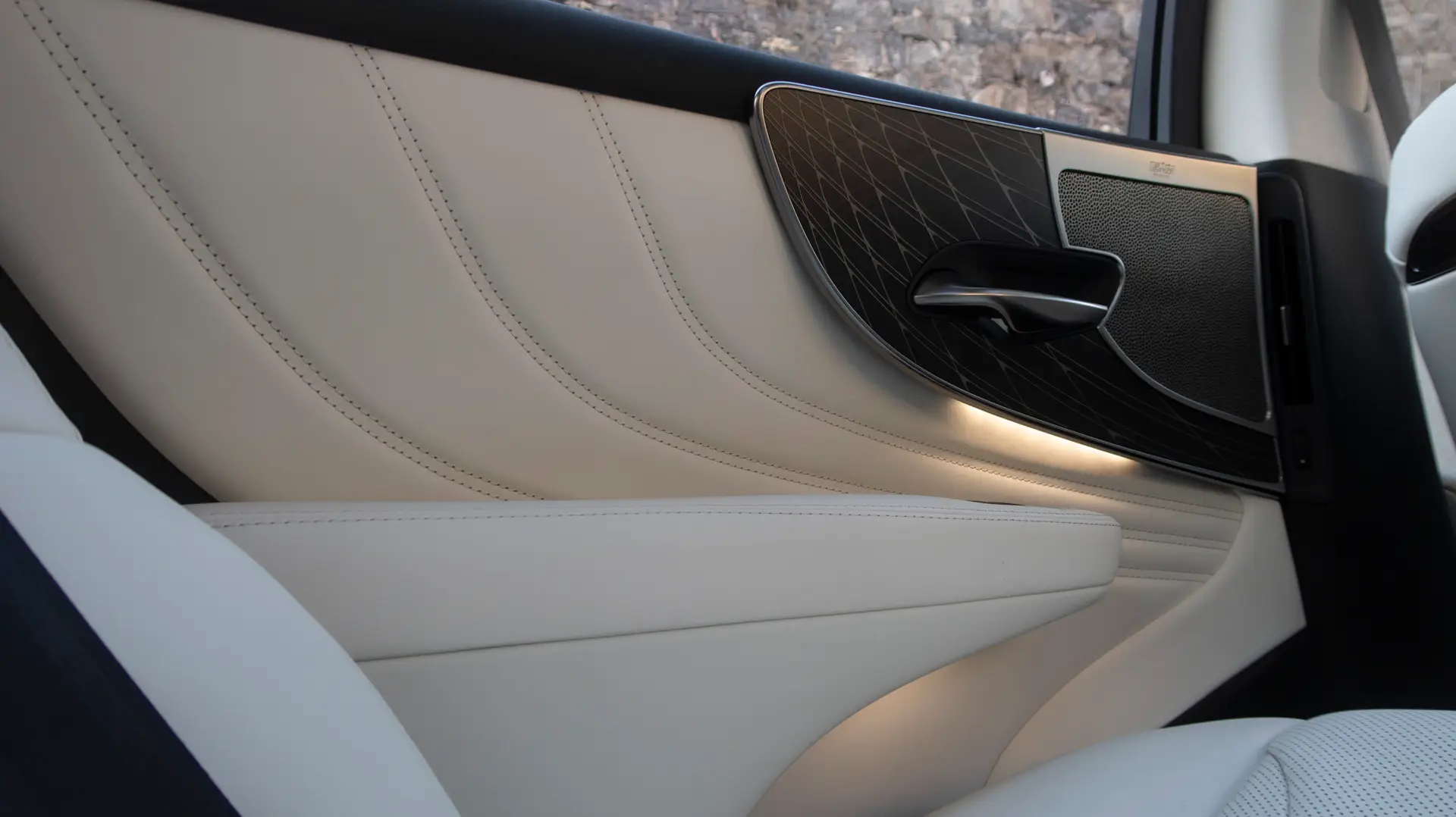
Those figures (from FuelEconomy.gov) are a little abstract to me, but it seems like the hybrid doesn’t save you all that much juice. Both versions are supposed to be able to get 29 mpg on the highway, which is decent for a car this size but not particularly outstanding in general.
Emissions, of course, is one of the reasons a few Toyota and Lexus vehicles are pivoting from V8s to turbo V6 engines. But, frankly, if your carbon footprint is really something you’re going to tell people you care about, it might be hard to justify feeding a 400-plus hp engine.
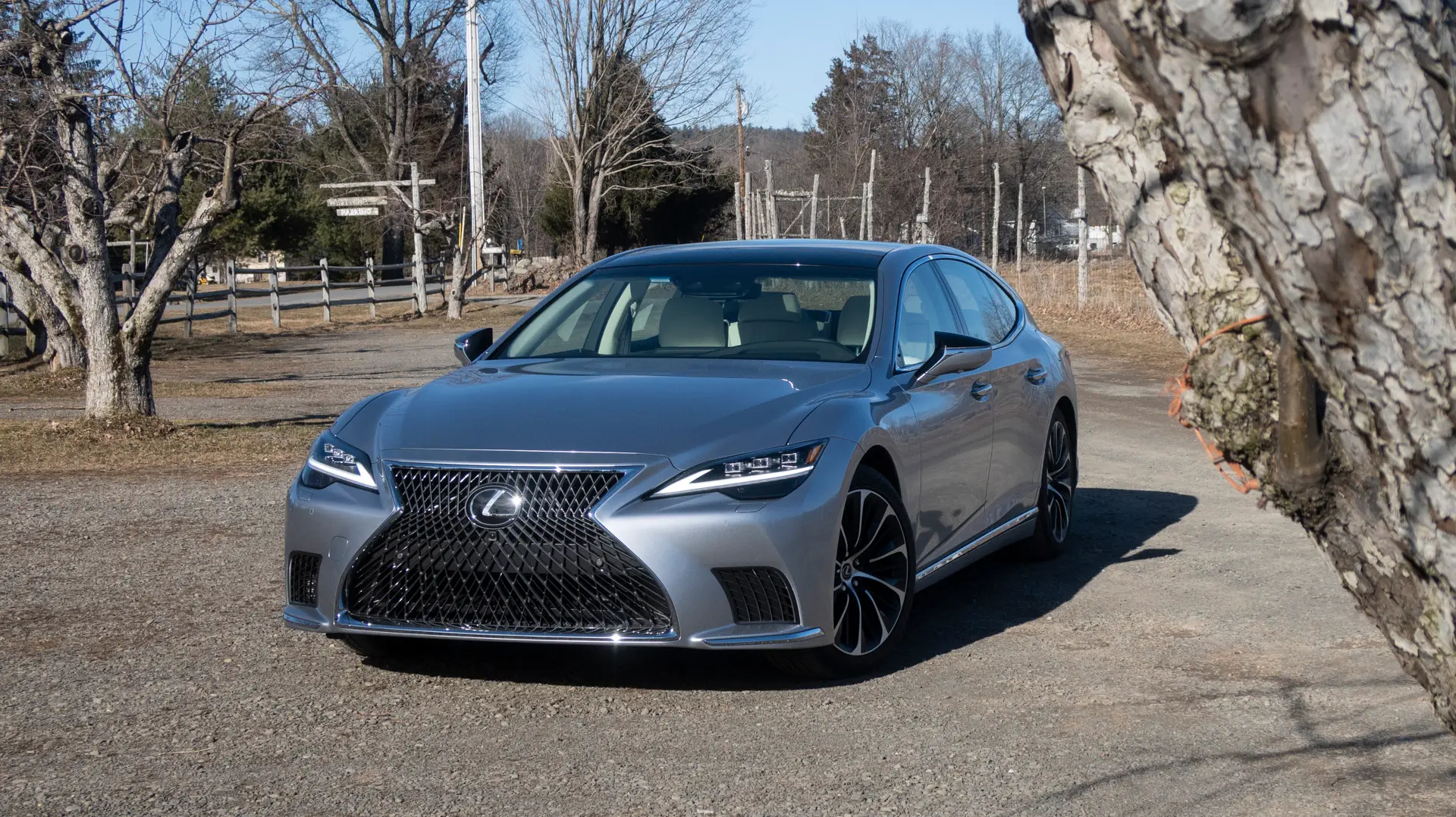
Value and Verdict
I certainly didn’t mind driving this car, but I really loved being in it. For a large luxury craft, that’s a perfectly reasonable place to land. It’s super smooth in everyday driving and is ready to unholster adequate acceleration when you want to sneak in an aggressive pass or merge.
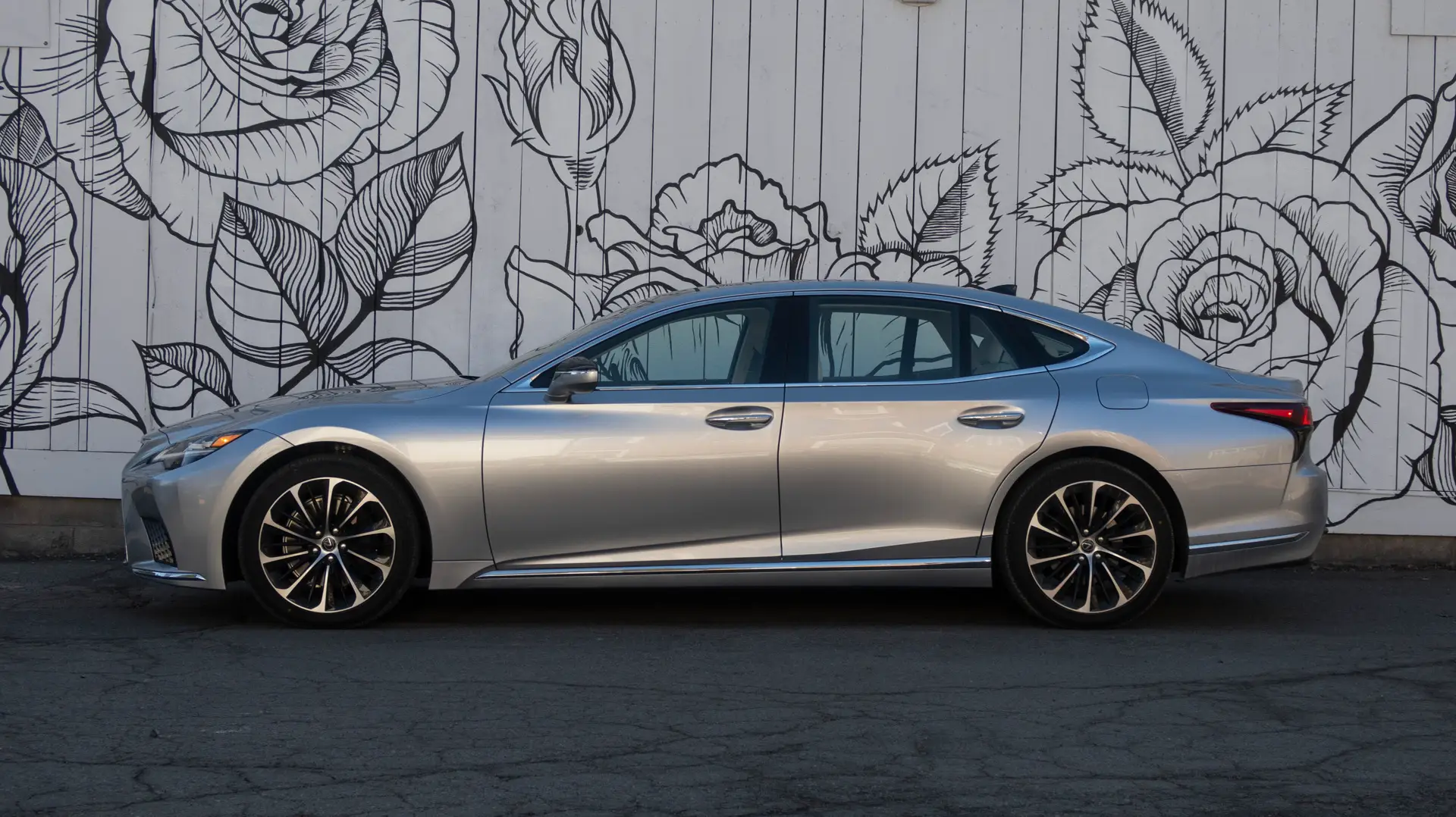
I’m sure you won’t be surprised that the most expensive sedan in Lexus’ lineup is a nice luxury car. But what cements it as really worth your attention is the attention that was spent designing the interface and interior.
I’ve seen other reviewers lavish praise on the comparable Genesis as achieving much of the same luxury goals as this car for less money. But if you’re serious about six-figure sedans, don’t buy one before inspecting the LS 500’s inside for yourself.



